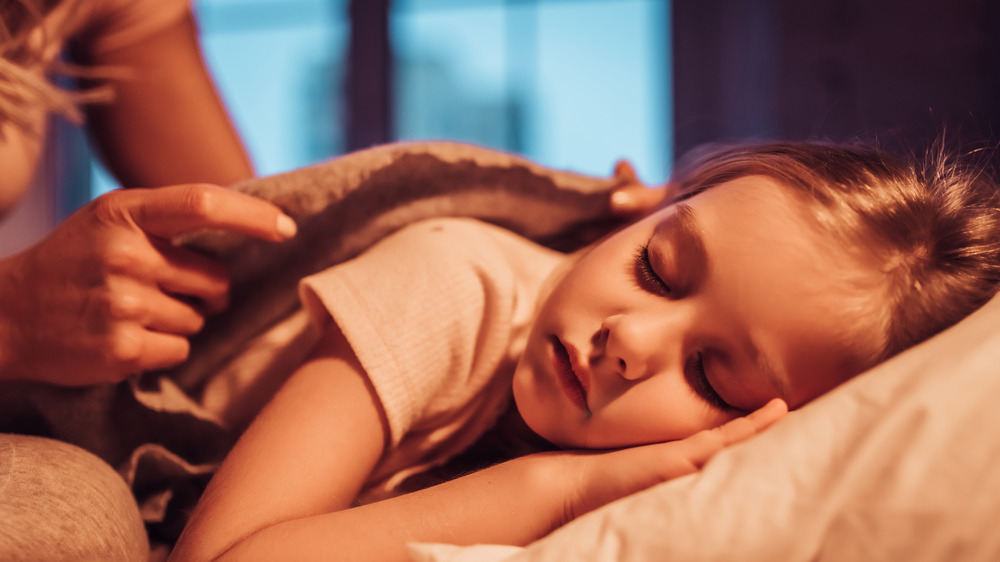Encountering a sleepwalking friend or family member in the middle of the night can be a startling experience. In movies, it’s often portrayed as a person rising out of bed with extended arms in a zombie-like trance. When debating whether or not to wake a sleepwalker out of their slumber, there are some things you’ll first want to consider.
Sleepwalking is a sleep disorder characterized by a state of simultaneous wakefulness and sleep (via Scientific American). Carlos Schenck, M.D., of the Minnesota Regional Sleep Disorders Center at the University of Minnesota Medical School, elaborates stating, “The brain produces delta waves and theta waves, which really demonstrates that the person is in a twilight state.” Sleepwalking generally occurs while in the deepest of sleep stages and usually initiates within two hours of having retired to the bedroom (via Sleep.org). While it can happen to adults, especially those with a genetic predisposition for sleep disorders, sleepwalking more commonly affects about 17 percent of children beginning roughly around the age of four years old (via the University of Arkansas for Medical Sciences).
Startling a sleepwalker out of sleep can lead to accident or injury

When it comes to the question of danger, sleepwalking does not pose harm to our health in and of itself. Experts have debunked the notion that waking a sleepwalker can potentially kill the sleepwalker themselves (via Scientific American). Rather, the risk lies more so in what can happen during the physical act of sleepwalking. Sleep disorder specialist Carlos Schenck goes on to clarify, “Sleepwalkers can harm themselves and others, and even kill themselves and others, and they can engage in highly complex behaviors such as driving long distances, and hurt others with sleep aggression and violence.”
In order to prevent any potential accidents from shocking a sleepwalker out of their disoriented state, professionals at Sleep.org advise loved ones to focus on prevention. Removing potentially hazardous items to eliminate the risk of tripping in the middle of the night, storing away car keys, and locking all doors, windows, gates, and fire escape exits are some important ways family members can help safeguard against accident or injury. Additionally, bystanders are encouraged to keep their distance when trying to intervene. Loudly calling out the sleepwalker’s name is one suggested method of waking. If more direct intervention is needed, try coaxing the individual back to bed using a soft tone of voice and guiding them back towards the bedroom.
Should you have any concerns about sleep disorders, please consult your healthcare professional for further diagnosis and treatment.

